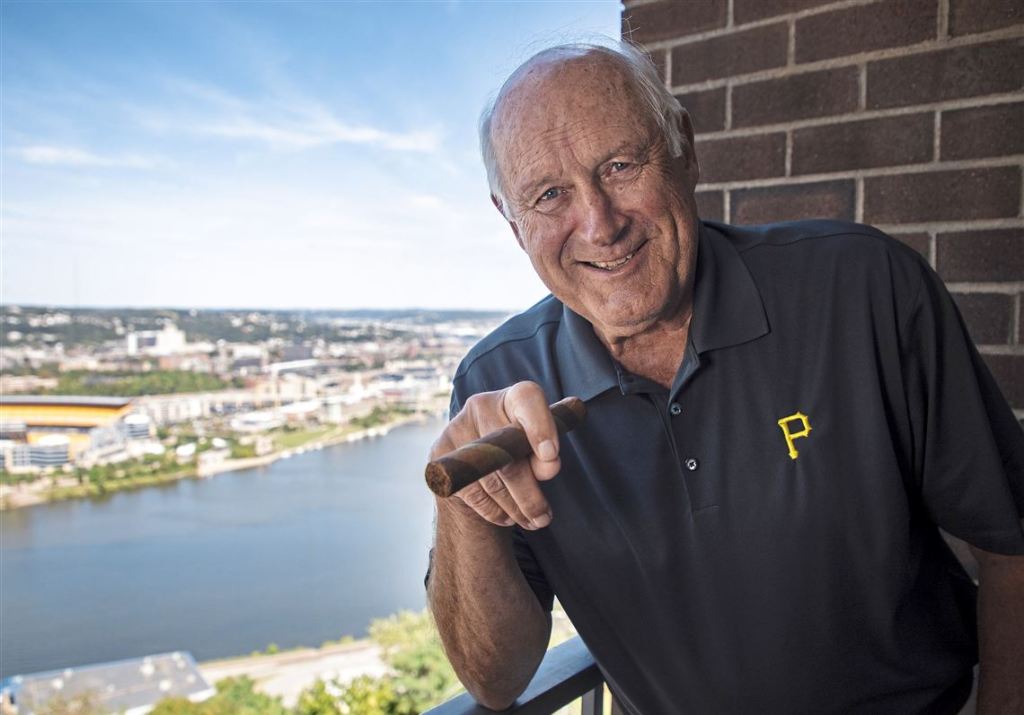If you know who Cody Dial is, you know the ending to this story. But, you probably don’t know who he is, and, even if you do, this story isn’t about the ending but the journey and the dangers of tunnel vision.
If you know anything about the criminal justice system, you’ll know that the police are often, sometimes unfairly, accused of tunnel vision by defense attorneys who feel that the best defense for their particular client is proffering another theory of the case. (Tunnel vision, by the way, is a real thing and is also known as “confirmation bias”, the tendency to assign weight to evidence that backs up the opinions and beliefs one already has and reject as unimportant any evidence that might contradict it.) And, every time I hear of a defense attorney using this tactic, I think back to the first time I saw it used in court.
The defendant was Roland Steele of McKees Rocks, who was accused of killing three elderly East Washington widows on June 21, 1985. The three women, Lucille Horner, Minnie Warrick, and Sarah Knutz, all in their 80s, attended a charity luncheon that day at the Millcraft Center in Washington. Prosecutors claimed that Steele approached the women in a parking lot, convinced them they were having car trouble, and offered to drive them to a nearby garage. Instead, according to police and prosecutors, Steele drove the women into a wooded area and beat them to death. The victim’s bodies were found the following day, beneath some old tires at an abandoned Cecil Township coal mine. The women’s jewelry and cash and credit cards from their purses, which were found along the side of a nearby dirt road, were missing.
During the trial, three prosecution witnesses testified that they saw Steele with the women on June 21st and testimony even indicated that Steele was seen driving Horner’s car with the women inside. The defendant denied the charges from the stand, claiming he’d been in Pittsburgh at the time, but that alibi witnesses who could put him there would not come forward because they were wanted by the police. More germane to our subject, though, was another witness defense attorneys put on the stand, a witness who claimed to have seen a suspicious man, one who looked similar to Steele but was not Steele, in the area near the time of the kidnapping. And, there it was. The alternate theory of the crime. This man, the one seen by the defense witness, was responsible, not Steele, and the prosecution witnesses were mistaken. (Steele himself also offered the theory that prosecutors may have had the state police tell the witnesses to deliberately lie.)
One thing I always did when covering a trial was keep an open mind. It wasn’t my job to determine whether guilt had been proven beyond a reasonable doubt, so I didn’t engage in that kind of thinking. I wrote stories about what was happening in the court room, and, when the trial was over, simply waited for the jury, the folks whose job was to determine whether prosecutors had met their burden of proof, to return with its verdict. In Steele’s case, it wasn’t a particularly long wait. He was convicted of three counts of first degree murder. The same jury later took only 45 minutes to sentence him to death.
Steele is currently living at the Bucks County Department of Corrections in Doylestown. He was scheduled to be executed in 2009, but the execution was stayed and a resentencing later ordered. He’s well into his 70s now and the chances that he’ll actually be put to death are miniscule. But, I digress. Cody Dial. And tunnel vision.
Cody Dial was a 27-year-old Alaska native who, like his father, Roman Dial, enjoyed adventuring outdoors. The younger Dial had been hiking through Central American jungles that year in 2004 when he informed his father that he was going to hike into the jungle of Corcovado National Park in Costa Rica. Cody Dial did, indeed, walk into that park. And, he never walked out.
Cody Dial was ten days overdue before his father realized he was missing. Roman Dial immediately went to Costa Rica to search for his son, but found that the authorities were not searching the area where Cody, in messages to his father, said he’d planned to go. Instead, they were following a different path. There’d been a report that a local drug dealer named Jose had been seen with a white backpacker on a trail outside the park. But, while Roman Dial discounted the possibility that said backpacker was his son, since Cody tried never to use guides and would be highly unlikely to be found alongside a local on a tourist trail, local authorities dismissed his objections.
After various search efforts failed, Roman Dial was convinced to agree to a television documentary about the case. The production company hired former DEA investigator Carson Ulrich and parajumper Ken Fournier to investigate the case, and, like local authorities, Ulrich and Fournier concentrated on the local drug dealer, Jose. Now, initially, Jose denied that the backpacker he’d been seen with was Cody Dial. But, when other continued to insist it had been the younger Dial, Jose changed his story…and not for the last time.
Eventually, Jose’s story evolved into a convoluted one that involved Cody Dial running across some illegal miners, who, after a standoff, abducted and eventually killed him. The ever-changing story pointed the finger at various members of this mining family at various times, and Jose eventually settled on claiming to have run away and not being certain of exactly what happened. But, Ulrich and Fournier absolutely were.
In a meeting recorded for the documentary cameras, Ulrich and Fournier told Roman Dial that they’d “solved” the case. According to Ulrich, Jose and Cody had been confronted by the illegal miners, and they’d murdered Cody. Now, to understand the next part, understand that you cannot be prosecuted for murder in Costa Rica without a body. And, per Ulrich, to make sure there was no body to be found, the illegal miners dismembered the younger Dial and fed him to the sharks in the ocean.
Roman Dial wasn’t exactly convinced, but Ulrich, a professional investigator, absolutely was. Because, he’d bought Jose’s story hook, line, and sinker. He’d followed exactly where a person not exactly known for his honesty, one whose story changed more often than his underwear, led. He and Fournier had looked right down the tunnel and were convinced that anything outside it was insignificant.
There are lots of ways to come to grief in the wilderness alone, and the vast majority of those ways don’t involve action by another human. Walk alone in a remote area anywhere and you can fall and break a leg. A serious fracture that doesn’t allow you to move can quickly become infected (especially in the tropics) and, unless you’re found, well. Now, add in non-human things that are plenty dangerous, like, say, venomous snakes. In Central America, you have the fer-de-lance, which causes more human deaths than any other American reptile. And, you also have, among other venomous vipers, the bushmaster, which can grow up to 13 feet long and is the longest venomous snake in the entire hemisphere. Few humans are ever bitten by a bushmaster because it lives in heavily forested areas and is rarely encountered by humans. But, walk through the jungles of Costa Rica, and, well. The bushmaster is there, capable of multiple strikes and injecting large amounts of venom.
And, there are more than just snakes in that jungle. There are crocodiles, jaguars, and spiders (including the black widow and the Brazilian wandering spider). Even the frogs can be dangerous, as Costa Rica is home to the three-striped poison dart frog, which can kill you even if you just inadvertently brush against it.
But, Ulrich and Fournier discounted any of these possibilities in favor of Jose’s story, even when efforts to support that story, including expeditions along the path Jose claimed to walked with Cody, failed to produce a trace of anything related to the Alaskan.
And, so it was that a six-part documentary called “Missing Dial” was made. And aired on the National Geographic cable network. And, to be fair, said documentary was extremely well-made. It told a gripping story, even if, as it went on, it was the thin story Ulrich had convinced himself was true. Even if many viewers absolutely had to be thinking the same thing I was as the film went on, “How can you be convinced of any of this with only this clown’s word for it?” And, it turned out that we skeptical viewers were about to be proven right.
Another danger of tropical jungles is one you wouldn’t put up there with snakes and crocodiles…unless you know about tropical jungles, where there are big, tall trees with shallow root systems…and frequent heavy rain storms with high winds. There are no statistics kept on deaths by falling trees or limbs, but such deaths do occur, especially among hikers and campers, and not just in the tropics, but in wooded areas all over the globe. And, yeah, we’re going somewhere with this.
A few days before the first episode of the documentary was to air, Cody Dial’s remains were found in the Costa Rican jungle…underneath a tree. Roman Dial identified his son’s equipment, which was all still there. Also still there were Dial’s money and passport, meaning he had not been robbed. Forensic examinations of the remains revealed no signs of foul play. Cody Dial had been killed, not by illegal miners, but by a falling tree. His body had not been dismembered and fed to the sharks. It had lain right where Dial died for nearly two years. Jose had been full of it. No surprise there. But, so had Ulrich and Fournier, though neither was exactly willing to admit it…even in the face of concrete evidence.
And, that’s the point here. Tunnel vision and the dangers of same…the dangers of, at some point, not just starting to believe your theory is correct, but of ignoring any evidence that doesn’t support that theory, all of which leads to grief even more often than the bite of the fer-de-lance.




